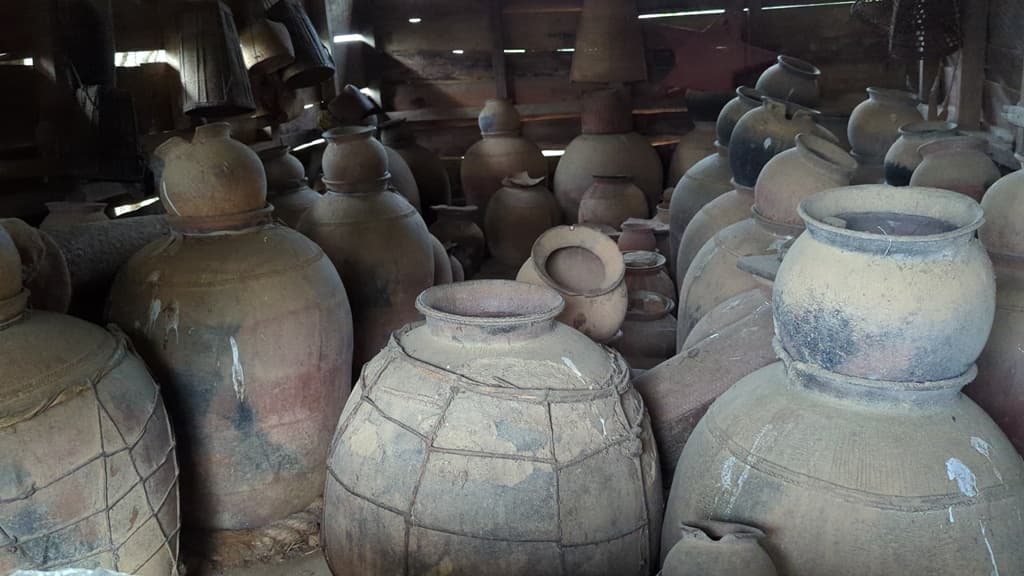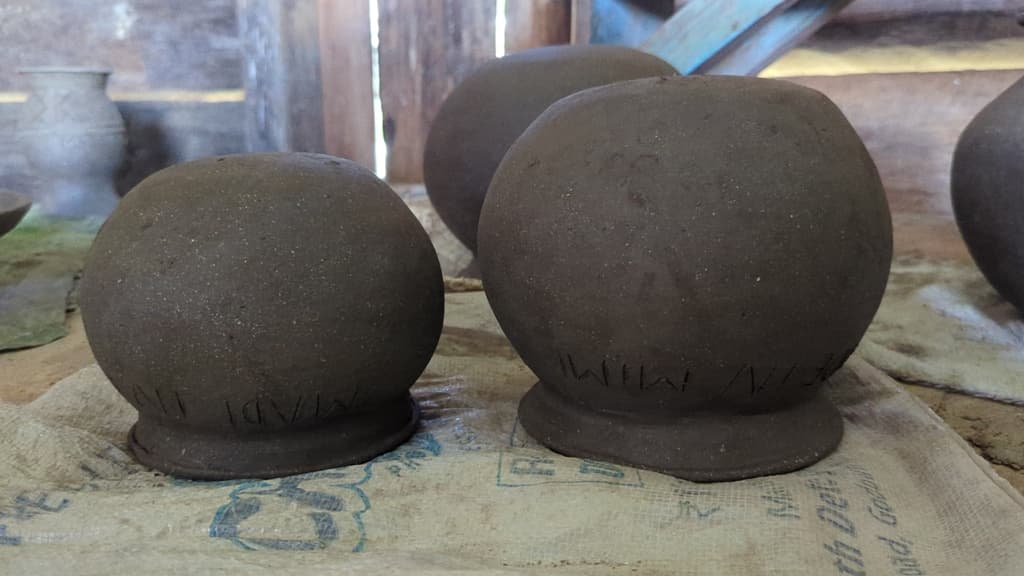FRIDAY, NOVEMBER 28, 2025
- Home
- Keeping clay alive: Mimi’s women potters revive a fading tradition
Keeping clay alive: Mimi’s women potters revive a fading tradition
Mimi’s women potters revive traditional hand-built pottery through community workshops, preserving cultural identity and creating new livelihood opportunities.
Share

KOHIMA — For the people of Mimi, hand-built pottery has long been a tradition primarily practised by women. Today, the community is shifting its focus towards teaching the younger generation, not only to carry on the legacy, but also to explore pottery as a livelihood option.
There was a time when most women in the village knew how to make pots. Now, fewer than a dozen still practise the craft. This realisation prompted locals to take pottery making in a new light: of learning, teaching and keeping the tradition alive.
“It is a matter of concern that a lot of youngsters today aren’t able to make it. That’s why we are also trying our best to teach them,” said Nukho, one of the few elderly women in Mimi who can still make potteries.
Having learned the craft from her mother-in-law more than ten years ago, she considers the skill a blessing. Her grandmother also practiced the craft when she was alive.
Also read: Nagaland Congress slams Centre over Franklin Graham visa denial
In Mimi, the pottery process has remained entirely manual. There are no wheels, mixers or modern tools. “A lot of other people use machines to mix the clay but we use hands only,” Nukho explained. Hand-built pots may not look as smooth as wheel-made ones, she said, but many believe they last longer.
Earlier, she sold pots for INR 100–200, but today they fetch around INR 500 and above. The income helped her raise her children. “That is happiness,” she said.
Although pottery has traditionally been practiced by women, she clarified that it is not taboo for men. In earlier times, men assisted with tasks that required physical labour, especially sourcing clay from forested areas far from the village.
The process itself, she explained, demands precision and patience. Potters must balance water carefully during the pinching stage, beat the clay evenly to prevent leaks, and allow the pots to dry at their own pace. It takes her two days to form a pot, followed by at least a week of sun-drying or even more when the weather is overcast.

Saving a fading craft
With fewer women practising the craft, a three-day hands-on workshop was held in October to teach young villagers the fundamentals of pottery. The workshop was organised by the International Border Area Peoples Welfare Organisation (IBAPWO), a grassroots organisation in Kiphire district, and supported by Roots to Branches Foundation.
Apong, chief functionary of IBAPWO, explained how the idea began. In March, he met Guwahati-based social worker Jennifer Liang, who later visited Mimi. When locals welcomed her with handmade pottery and traditional items, she asked how many villagers could still make pots. The answer—only five or six elderly women—came as a shock.
Realising that the practice might disappear with the passing of the elders, Liang proposed the idea of teaching younger people, both to preserve tradition and to create livelihood opportunities.
Accordingly, a baseline survey was conducted, and the workshop was planned to assess young people’s interest and understanding. The workshop served two purposes: to preserve pottery-making culture and to explore livelihood diversification for the youth.
Held from October 2 to the 4th, the workshop brought together five elderly women as trainers and around 27 young participants.
For participants like 30-year-old homemaker Niojila Yimkhiung, the level of care required was an eye-opener. “We have to make sure the clay does not get mixed with other dirt. Otherwise, it will crack later,” she said.
She explained the steps: raw materials are collected from the jungle, dried for two days, pounded and sieved. The clay powder is then kneaded with water and shaped through pinching, coiling and beating techniques.
A large flattened stick and rounded stones are used for shaping—the stone inside the pot, the stick outside, both working together to form its structure.
After shaping, the pots are dried for two or three days and then fired to test their stability. Some pots crack during this stage.
During the workshop, they made mugs, smoking pipes, plates, flower pots, curry pots and decorative pieces. Designs are carved using a sharp bamboo stick or, in some cases, with fingernails—a technique passed down by the older generation.
Despite modern alternatives, handmade pots remain part of daily life in Mimi. Large pots are commonly used to store grains and crops, and decades-old pots are still preserved by families and passed down.

Apong said that while Mimi’s culture is rich, it has not been widely shared outside the community. Preserving pottery, he said, is part of protecting local identity. “Most traditions are getting lost and all over the world people are trying to preserve their culture. It’s an identity that we don’t want to lose,” he said. Passing on skills, supporting youth and women, and creating livelihood diversification were central goals of the workshop.
He noted that sourcing the raw material—red and grey clay—remains the most challenging stepping stone, as it must be collected from the forest. Broadly, the process involves three main steps, though many smaller tasks are embedded within each stage.
According to him, initiatives like the workshop help young people reconnect with their heritage at a time when many traditional practices risk fading. “Being the head of the organisation and belonging to the community, I felt it is my responsibility to preserve my culture, my identity,” he said.

